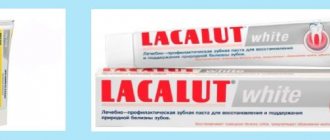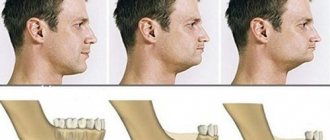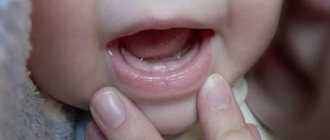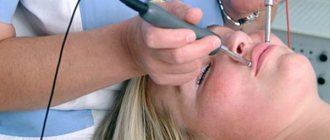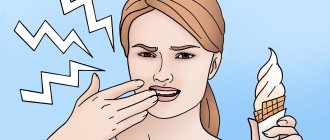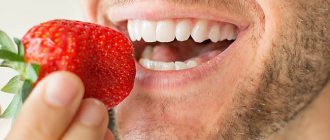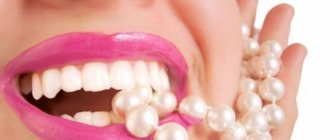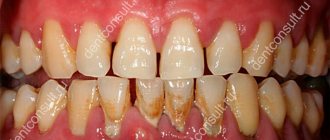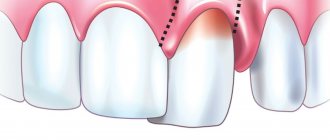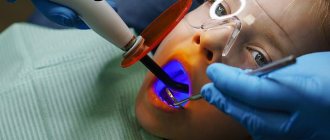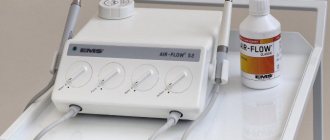What it is?
Professional teeth cleaning means removing hard and soft plaque from teeth, as well as polishing them. Therefore, the procedure usually consists of two parts, and various methods can be used to remove the stone, for example:
- mechanical;
- ultrasonic;
- laser:
- sandblasting (Air Flow);
- using the VECTOR device.
In serious cases, the dentist may use a combination of several methods. Most often, ultrasonic cleaning is done, and then for final polishing, Air Flow is used.
In addition to caring for your teeth, professional cleaning takes care of the condition of your fillings and polishes the filling material. This allows you to preserve the original color of the filling and prevent its destruction.
During the manipulation process, the dentist performs a hardware removal of all excess from the tooth enamel and removes particles from the oral cavity. At the end, a protective fluoride varnish is applied, which reduces tooth sensitivity and contributes to the long-term preservation of the light tone of the enamel and the smoothness of each tooth.
What paste to use
According to GOST, toothpastes are divided into hygienic and therapeutic and prophylactic. Hygienic pastes are designed for mechanical cleansing, removing food debris and plaque from enamel. Therapeutic and prophylactic products are intended for the prevention of oral diseases. Such pastes have an antiseptic and anti-inflammatory effect.
Rospotrebnadzor identifies 4 types of toothpastes:
- with fluoride content - reduce the risk of developing caries and demineralization of enamel;
- with triclosan - have an anti-inflammatory effect in gum diseases;
- having a whitening effect - help in the fight against dark plaque;
- with an anesthetic effect - reduces the increased sensitivity of teeth to sour, hot and cold.
Should I brush my teeth?
The question of whether it is worth having professional teeth cleaning or using home remedies may be of interest to almost every person. To understand the need for such a procedure, you should know how plaque is formed.
Even if you carefully follow your dentist’s recommendations and brush your teeth regularly, ideally after every meal, using a toothbrush and the best toothpaste can only remove soft plaque. And even with the correct movements and careful work of the brush, there may be hard-to-reach places in the dentition where, in a short period of time, plaque is mineralized by calcium salts, which are contained in human saliva. As a result, hard plaque (tartar) forms, which cannot be removed at home.
Tartar is made up of bacteria that cause serious dental disease and can lead to the loss of one or more teeth. In addition, the stone is dark in color, so teeth lose their natural whiteness with plaque.
The peculiarity of the formation of tartar is that as soon as the first film appears on the teeth, the process accelerates significantly. The surface of the tooth enamel becomes rough, so various microorganisms easily stick to it. In addition to losing a beautiful appearance, a person develops bad breath.
To get rid of tartar and restore natural whiteness, you need to have your teeth cleaned in a clinic. Only a specialist with dental equipment can effectively remove plaque and tartar, polish and subsequently care for teeth.
Is it important to brush your teeth “before” or “after” eating?
This is a question that is asked so often that the correct answer is lost even in the information masses.
After brushing your teeth before bed, provided that you did not get up for a “light night/evening snack,” you can leave your teeth brushing in the morning. During sleep, the sufficient amount of saliva necessary to rinse the oral cavity is suspended. Desquamated epithelium begins to accumulate in the mouth. It is found on the inner surface of the tongue, cheeks and lips. And it is also one of the reasons for the unpleasant odor. Before eating, rinse your mouth with water or mouthwash and drink a glass of water at room temperature. After breakfast, you should definitely brush your teeth. During the day, it is better to use rinses and dental floss to keep your gums clean and protect them from tartar formation.
How often should I clean?
Dentists have a unanimous opinion on the issue of frequency of teeth cleaning. The procedure should be performed 1-2 times a year, but not more often, so as not to damage the enamel.
It is necessary to take into account the individual characteristics of the body - for some it is enough to clean the stone once a year, while for another person plaque formation occurs faster, and he needs to visit the dental clinic once every six months.
In addition, professional teeth cleaning is indicated before prosthetics, implantation and dental treatment, as well as before teeth whitening. A clean tooth surface will allow the dentist to do his job better:
- better choose the color of the filling, crown or veneer;
- notice the onset of caries in time;
- prevent many gum diseases;
- achieve good treatment and whitening results.
This manipulation is recommended for those people who smoke and often drink drinks with dyes (tea, coffee, wine, etc.).
How is the procedure done?
Comprehensive teeth cleaning can be divided into 4 stages:
- The doctor removes tartar using an ultrasonic device. The water pressure cools the treated area of the mouth, reducing possible discomfort. At this stage, the enamel is cleaned superficially.
- The specialist uses a sandblaster to blast the teeth. It removes pigmentation, plaque and soft deposits, while simultaneously polishing the enamel. The method makes teeth smooth and returns their natural color.
- Using abrasive pastes, the doctor polishes the teeth. The technology allows you to grind even fillings. The abrasive for each person is selected individually. Polishing makes the enamel shiny and smooth, reducing the likelihood of caries.
- To strengthen the enamel and reduce its sensitivity, the specialist coats it with fluoride varnish. The resulting film lasts about a week, allowing you to consolidate the resulting effect.
Does it hurt?
Pain and sensitivity are individual sensations. No one can say with certainty that the patient will not experience pain during hygienic teeth cleaning. If the enamel is thin, or dentin is exposed in some areas, then through the tubules in the hard tissue of the tooth, unpleasant sensations are transmitted to its nerve. If the patient has healthy and strong units, there will be no discomfort during the procedure.
In terms of painlessness, laser cleaning takes first place. Before it is performed, the gums are protected with special devices.
Discomfort may also occur after the procedure, since some techniques are aimed at removing subgingival deposits located deep under the soft tissues.
Cleaning methods
Currently, dentists offer several methods for cleaning teeth. The oldest is mechanical, when tartar is destroyed using a special tool in the form of hooks. This method can injure your gums, so it is rarely used.
One of the progressive methods is ultrasound. Cleansing is carried out using an ultrasonic scaler. Stones are destroyed by sound vibrations of a certain frequency, while plaque is removed and supragingival and subgingival pockets are cleaned. The doctor can use attachments of different sizes, depending on the complexity of the treatment area and the thickness of the plaque. In addition, during the work, water or an antiseptic is supplied to the oral cavity, which removes stone particles through a dental saliva ejector. The patient does not feel pain, but if the necks of the teeth are sensitive, the doctor administers local anesthesia.
Modern laser systems allow not only to remove the hardest tartar, but also to whiten teeth. The device causes the evaporation of moisture contained in plaque and removes deposits from the enamel in layers. At the same time, the enamel receives a lighter shade, and the achieved result of a snow-white smile will last for several years. The procedure is absolutely painless, but for certain categories of patients there are contraindications.
The latest Swiss technology Air Flow makes it possible to remove particles of plaque, stone and pigments in hard-to-reach places, clean subgingival pockets and polish enamel. Treatment is carried out with a jet of cleaning mixture, which consists of sodium bicarbonate and water. Under high pressure, this composition is applied to each tooth. Regular baking soda acts as an abrasive. This sandblasting method allows for high-quality hygienic treatment, removing all excess from the teeth, achieving a smooth surface of the tooth enamel and its natural lightening. The manipulation is painless and pleasant for the patient. The result is a Hollywood smile and clean teeth.
The VECTOR device is the latest word in dentistry. It is intended for the prevention and treatment of periodontitis and acts by vibration. This technique takes advantage of ultrasonic waves and the active action of a fluoride and calcium based cleaning mixture. Using such equipment, the doctor removes deposits and bacteria, cleans subgingival pockets and polishes tooth enamel.
Modern people have a wide choice of professional hygiene methods. A consultation with a dentist will help you choose the most suitable one.
How does plaque appear on the tongue?
Let's figure it out from the very beginning - the structure of the body. The tongue is your muscular organ that has a mucous membrane. The structure of the surface of the tongue determines how many bacteria will appear on it. These bacteria, in turn, are the cause of plaque and odor. As is correct, less plaque accumulates on the tip of the tongue because the tip of the tongue is cleaned using natural movement in the oral cavity. The back of the tongue is less mobile. Compared to the anterior one, it only comes into contact with the palate. It is also cleaned less thoroughly by the patient. Therefore, the plaque there is thicker. The reasons for the appearance of plaque on the tongue are obvious:
- Excessive alcohol consumption;
- tobacco and smoking;
- coloring matter from products;
- delay in treating infections;
- chronic diseases;
- stomach problems.
Indications and contraindications
Teeth cleaning in a dental clinic is recommended for everyone, but those people who:
- have installed permanent dental structures (braces, veneers, crowns, implants, etc.);
- are going to undergo professional teeth whitening;
- planning prosthetics or dental treatment;
- smoke;
- drink a lot of drinks that have a coloring effect (coffee, tea, etc.).
If there are certain health problems, a person cannot use any of the teeth cleaning methods offered by dentists, but if necessary, you can choose another option. For example, temporary contraindications include:
- inflammation of the oral mucosa;
- ARVI, bronchitis or other diseases that make nasal breathing difficult;
- pregnancy and breastfeeding period.
In such cases, professional teeth cleaning can be done after such reasons have ended.
General contraindications include the following health problems:
- arrhythmia and other heart diseases;
- asthma;
- increased sensitivity of teeth;
- allergic reactions;
- tuberculosis;
- hepatitis;
- various infectious diseases;
- epilepsy, etc.
Such manipulations are not performed on children and adolescents; if necessary, stone cleaning can be carried out if permanent teeth are present (over the age of 12 years).
Toothbrush hardness
The stiffness of the brush is determined by the diameter of the fiber - the larger it is, the stiffer the brush will be. Nowadays, manufacturers often indicate the degree of hardness on packaging: very soft (ultra soft, extra soft), soft (soft), medium (medium), hard and very hard (hard).
Very soft brushes are suitable for children under 5 years old and people with sensitive teeth. Soft brushes - for children from 5 to 12 years old, as well as for severe pain in the teeth and gums. Medium hardness brushes are suitable for children over 12 years old and adults.
Hard and very hard brushes are not recommended for use without consulting a doctor. Such brushes can injure the gums and cause abrasion of the hard tissues of the teeth.
What not to do after prof. cleaning?
When a person has spent time and money, visited a dentist and received an excellent result in the form of clean teeth and a snow-white smile, the desire to preserve all this for a longer time becomes understandable. Therefore, it is important to follow the following general recommendations:
- do not eat or drink (especially drinks with dyes) for 2 hours after the procedure;
- Replace an old toothbrush that contains bacteria with a new one;
- for 7 days, eat less foods that can stain tooth enamel (coffee, wine, tea, etc.);
- rinse your mouth after every meal;
- regularly brush your teeth with the correct movements, use special threads;
- Go to the dentist once every six months.
Types
Some patients, out of ignorance, do not distinguish between teeth cleaning and teeth whitening - these are different events, each aimed at its own result. Several types of cleaning have been developed in dentistry, the most popular:
- ultrasonic scaler;
- laser machine;
- "air flow";
- hygienic (manual).
Each of these types of cleansing has pros and cons. The methods are designed to get rid of problems (according to severity level).
- Ultrasonic cleaning optimizes the condition of the gums and stops bleeding. The scaler has several contraindications.
- Laser cleaning kills microorganisms and has a healing property – it heals mouth ulcers.
- “Air flow” cleaning is performed using an air stream with an abrasive. There are contraindications.
- Hygienic cleaning is a method of removing plaque using specialized dental brushes and hooks - this is a gentle method of removing tartar. Today, hygiene procedures at the dentist are used less frequently than others.
Only a dentist can choose the right way to clean enamel. When choosing, he takes into account the method suitable for a particular patient, age, and dental condition.
Harm
Air abrasive treatment consists of particles of soda NaHCO3 (or silicon oxide SiO2, calcium carbonate CaCO3, etc.) flying out of the dental apparatus under pressure and knocking out the surface layer of dental plaque. In addition to dental plaque, the outer part of the enamel is also removed (a very small amount, invisible to the eye). The fear of completely wearing off your enamel with annual cleanings is not justified, however, after using AirFlow, the tooth surface becomes uneven. And not only where the plaque was, but also in neighboring areas (where soda powder gets). This leads to rapid re-adhesion of plaque. To eliminate this drawback, it is recommended to polish the teeth with brushes and pastes after brushing in the dentist’s chair. However, it should be understood that a rotating brush may not reach all places on the tooth where mini-particles of soda have been. Most contact surfaces are poorly polished.
Another disadvantage of air abrasive treatment is the inevitable injury to the gums. The gums, in the presence of dental plaque, are inflamed to one degree or another, and contact with a stream of soda powder causes it to bleed. In sensitive patients, it can also cause pain. Bleeding goes away on the same day, but post-traumatic symptoms disappear completely within a week. Although most people do not pay attention to these minor troubles, some experience noticeable inconvenience.
It is extremely rare, but still such a complication as airborne emphysema occurs. If the marginal attachment is damaged, air from the AirFlow device under pressure penetrates the soft tissue. The gums and cheek increase in volume, and when you press on them, a crepitating sound is heard. The appearance of a swollen face greatly frightens the patient himself. But in the vast majority of cases, emphysema does not cause serious problems or complications. No intervention is needed to eliminate it. After a short time it goes away on its own. To prevent infection, you can take a course of antibiotics.
To prevent the formation of air emphysema during subsequent professional cleanings, AirFlow should be performed before ultrasonic treatment, and not after.
Ultrasound, if used carelessly or incorrectly, can create enamel cracks. Such cracks by themselves do not lead to subsequent destruction. But the mechanical strength still decreases, and when other factors (trauma or caries) are added, the weakened enamel flies off more often. Over the years, the crack can accumulate food pigments and turn dark. This does not lead to caries, but the appearance worsens.
The pain from ultrasonic cleaning is higher than from air-abrasive cleaning. It also usually goes away within a week, but ultrasound is more difficult to endure. Approximately 98% of patients do without anesthesia; for the most sensitive 2 percent, professional hygiene with anesthesia is recommended. To completely “freeze” the oral cavity, 6-10 injections are required. In this case, “spraying” or “anointing” the gums will not work - application anesthesia anesthetizes only soft tissues, and with ultrasonic cleaning, the teeth, not the gums, hurt. A large number of injections may not have the best effect on the patient’s general condition, so it is advisable to split the procedure into two doses. First, for example, brush only the upper teeth under anesthesia, and the lower teeth at the next visit.
Myth #1: Plaque protects tooth enamel.
The myth says that natural plaque is the best protective layer that prevents the enamel from deteriorating. In fact, it is a large accumulation of bacteria on the surface of the teeth. If plaque is not removed at home and professional hygiene is neglected, it can turn into tartar.
Dentist's opinion: under the influence of saliva minerals, plaque thickens and turns into an even greater concentration of harmful bacteria that live and multiply. Intoxication of the body and inflammation in the gums occurs. The gums recede and the roots are exposed, causing sensitivity and mobility of the teeth.
Myth No. 3: Professional hygiene cannot whiten teeth
One of the most popular myths about professional cleaning is that it is useless and does not whiten teeth. Dentists say that after the first procedure, teeth become noticeably lighter, this helps to safely whiten the enamel.
Dentist's opinion: in fact, the natural color of the enamel remains unchanged after cleaning. But due to the removal of dark pigmented plaque, as well as a homogeneous tea and coffee plaque that completely covers the entire surface of the teeth, the natural brightness, shine and color of the teeth return. This creates the whitening effect.
Effect of professional cleaning on dental restorations
AirFlow affects restorations in the same way as it does on your own teeth - it removes attached plaque and creates slight roughness. Ceramic and metal structures normally have a surface smoothness higher than the enamel of your own teeth. Plaque sticks to them much less often, and there is no need to treat them at all if there is no need. If, nevertheless, air-abrasive treatment of ceramic, metal-ceramic or metal crowns is required, then they should be polished not with a brush and toothpaste, but with a special polishing set.
Separate polishing agents are also used for fillings, plastic, composite or metal-plastic crowns. These materials are less smooth than tooth enamel, and therefore accumulate plaque faster. Grinding the outer layer of such restorations can slightly improve their appearance, since these materials themselves darken over time, and the darkening is most pronounced in the superficial areas. However, the painted border between the filling and the tooth is not always eliminated in this way.
Ultrasonic treatment can lead to the loss of low-quality restorations. Even if the filling looked good outwardly and did not create any problems, its loss during ultrasonic cleaning indicates that adhesion to the tooth has already decreased to its minimum values. After some short time, such a filling would fall out on its own. But a dentist will not remove a high-quality restoration with an ultrasound, even if he really wants to and spends the whole day working on it.
Metal ultrasonic attachments are used to clean teeth. Composite fillings can become stained upon contact (the resulting streaks can then be easily sanded off). Contact with a metal ultrasonic tip is contraindicated for ceramic restorations (crowns, inlays, onlays, bridges) as cracks may form. For their processing, special polymer ultrasonic tips are used that do not damage the ceramics. The same attachments are used when cleaning implants.
Rice. 6. Ultrasonic tip for implants and ceramic restorations.
Myth No. 7: There is an unpleasant taste sensation during brushing.
Some patients actually feel an unpleasant salty taste. The sensations are associated with the use of the same soda-based Air-Flow sandblasting powder. But today there are other mixtures based on calcium carbonate and even special formulations with aromatic additives.
A Dentist's Take: Some brands offer a variety of pleasant-flavored brushing powders that turn your professional hygiene routine into a pleasant dental spa. Especially if it is carried out in combination with fruit or berry professional toothpastes and fluoridating gels.
